| Columns Retired Columns & Blogs |
Can't see why someone would spend this kind of money on a CD player that can't even play hi-res formats like SACD. What were they thinking?
I measured the Audio Note CDT One/II and DAC 2.1x Signature with my Audio Precision SYS2722 system (see www.ap.com and the January 2008 "As We See It"), the two components connected via Audio Note's supplied S/PDIF link. I also tested the D/A processor via its AES/EBU input. (This input locked to data with sample rates up to 96kHz, but not higher.) The transport began muting once per revolution of track 34 of the Pierre Verany label's Digital Test CD, which has 2mm gaps in its data spiral; the CDT One/II muted completely on track 35, which has 2.4mm gaps. The transport's error correction is better than that required by the CD standard, but is not as good as other current transports. The DAC 2.1x's maximum output level was 2.65V, and it preserved absolute polarity (ie, was non-inverting). The output impedance at high and middle frequencies was high, at 900 ohms, rising to a ridiculous 15k ohms at 20Hz, presumably due to the output stage being anode-coupled. The Audio Note DAC needs to be used with preamplifiers that have an input impedance of at least 100k ohms if the low frequencies are not to sound lean.
As with Audio Note's CD-4.1x CD player, which Art Dudley reviewed in July 2012, the DAC 2.1x outputs a broken-looking sinewave (fig.1). This is because the player lacks a low-pass reconstruction filter, and each sample presented to the DAC chip results in a DC output voltage that is sustained until the next sample. However, with 44.1kHz data, the DAC 2.1x's impulse response (fig.2) is an almost-perfect delta function. Looking at the D/A processor's frequency response with 44.1 and 96kHz data (fig.3), it appears that this filter is used to compensate for the top-octave rolloff associated with the DAC's aperture effect rather than to act as a low-pass reconstruction filter.
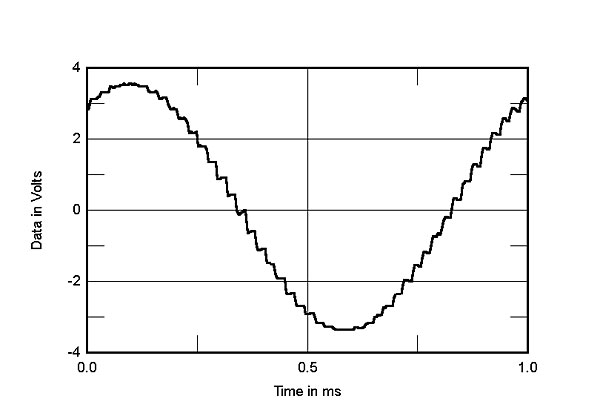
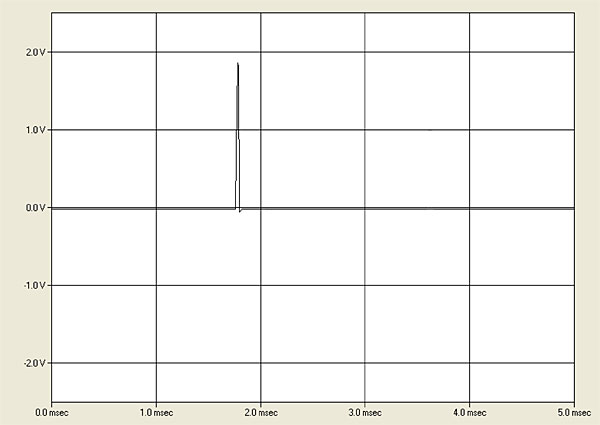
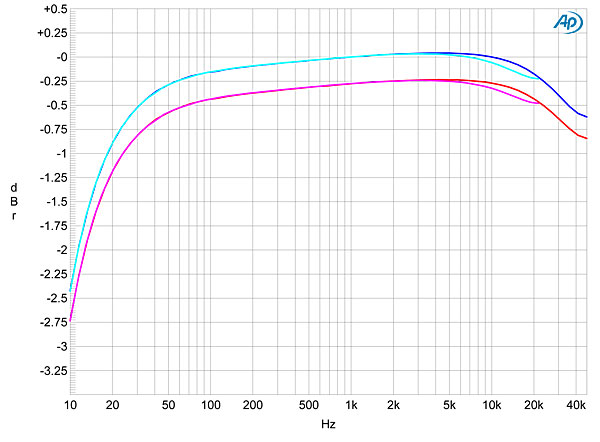
This was confirmed by wideband spectral analysis of the Audio Note's output as it decoded data representing 44.1kHz-sampled white noise at –4dBFS (fig.4, red and magenta traces). The output rolls off very slowly above the audioband, with sharply defined nulls at 44.1 and 88.2kHz. There is virtually no suppression of the aliased images of the audioband data, which means that the image at 25kHz of a full-scale 19.1kHz tone (blue and cyan traces) lies at almost the same level. There is also a second-order intermodulation product of the 19.1 and 25kHz tones at 5.9kHz and –54dB (0.2%).
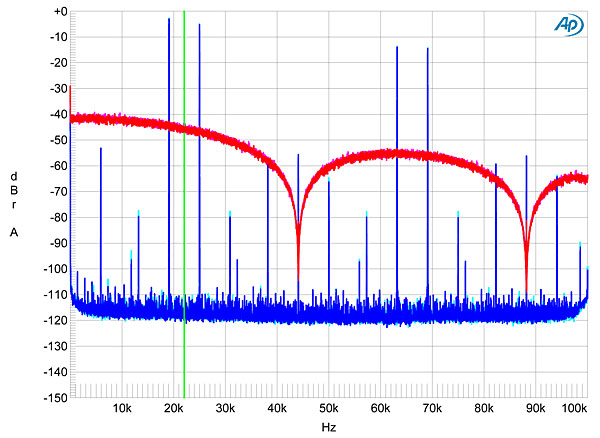
Channel separation was excellent, at >120dB below 2kHz, and still 112dB at the top of the audioband. Spectral analysis of the DAC 2.1x's noise floor revealed a higher level of random noise in the left channel, with power-supply–related spuriae present in the right channel (fig.5). These can be seen in fig.6, which shows spectral analyses of the DAC 2.1x's output when fed first dithered 16-bit data representing a 1kHz tone at –90dBFS, then 24-bit data representing the same signal. While fig.6 reveals that the increase in bit depth has dropped the noise floor by around 9dB, of more significance is the fact that the small amounts of second- and third-harmonic distortion with 16-bit data have been replaced by much higher levels of the third, fifth, seventh, and ninth harmonics. This indicates that, as expected from its use of an AD1865 DAC chip, the Audio Note's AES/EBU input truncates 24-bit data. So while its AES/EBU input will operate up to 96kHz, the DAC 2.1x is not a high-resolution DAC.
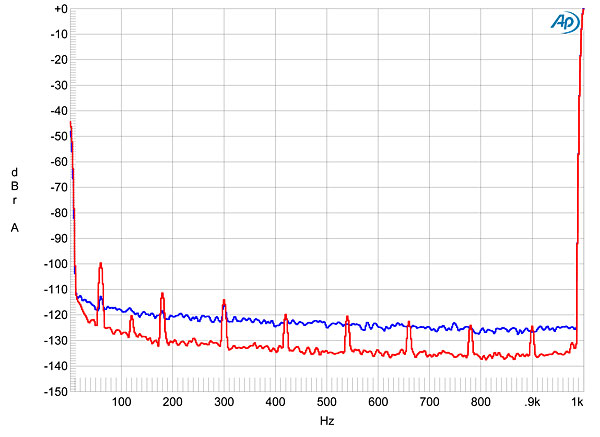
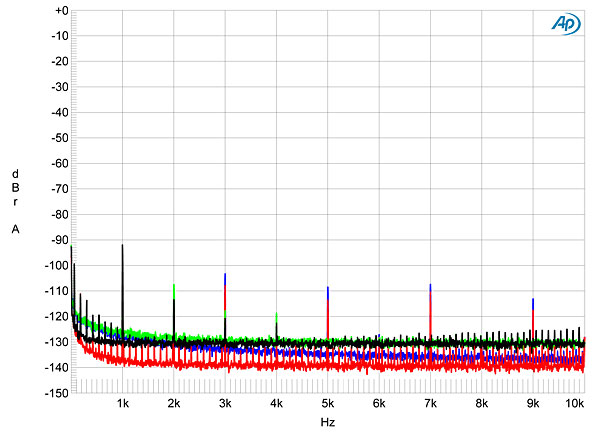
With undithered 16-bit data representing a tone at exactly –90.31dBFS (fig.7), the three voltage levels described by the data are not very well defined, and are overlaid with high-frequency noise. The waveform was not significantly different with undithered 24-bit data (not shown).
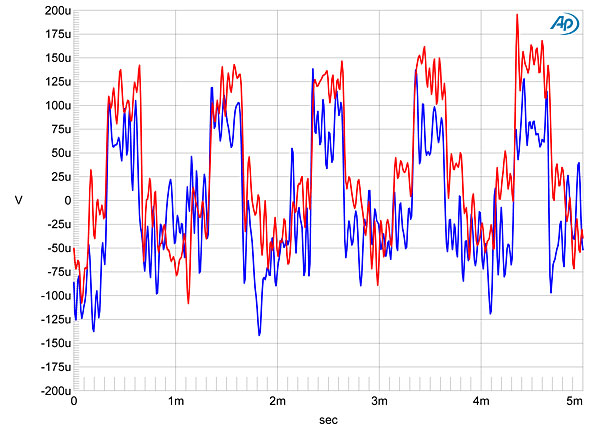
With a full-scale signal into 100k ohms, the DAC 2.1x offered relatively high levels of second- and third-harmonic distortion (fig.8). However, reducing the signal level by 10dB dropped the level of the second harmonic by more than 12dB (fig.9). Testing the Audio Note DAC with an equal mix of 19 and 20kHz tones resulted in an output spectrum (fig.10) dominated by the poor rejection of ultrasonic images seen earlier. Actual intermodulation distortion was relatively low, the 1kHz difference product lying close to –60dB (0.1%).
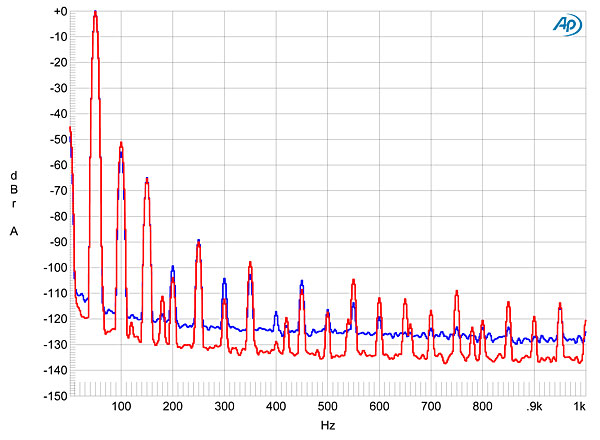
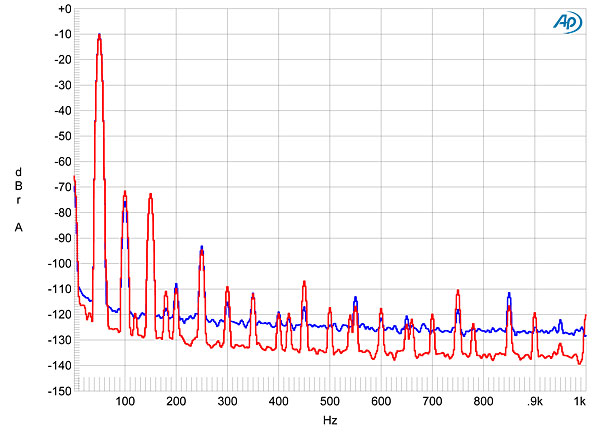
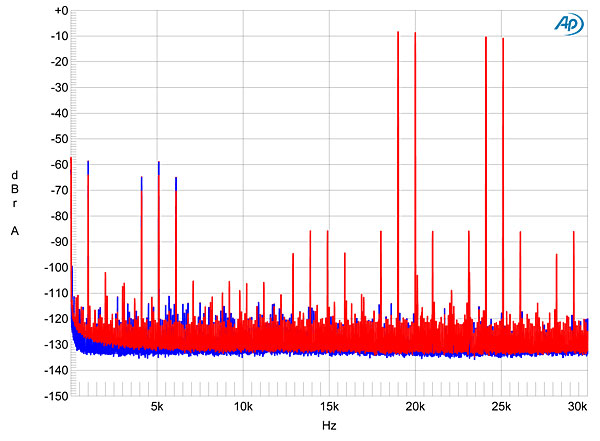
Finally, tested with 16-bit J-Test data, the Audio Note duo showed poor rejection of word-clock jitter (fig.11), with a significant increase in the levels of the odd-order harmonics of the low-frequency, LSB-level squarewave (the correct levels are indicated by the green line). Though slightly better with 16-bit AES/EBU data, the picture was still much worse than is usual with modern processors.
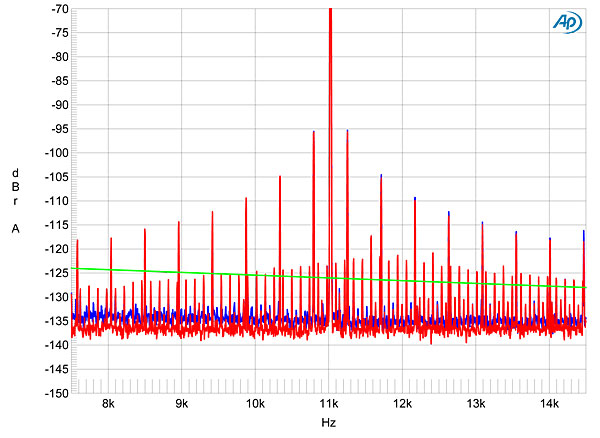
Overall, it is difficult to avoid the temptation to describe the Audio Note DAC 2.1x Signature as "broken"! But other than its poor rejection of jitter, most of its measured problems stem from the decision to dispense with the usually obligatory reconstruction filter. Without those filter-related issues, you are left with a product whose distortion signature is predominantly the subjectively preferred second harmonic, but also a product that should not be used with preamplifiers of low input impedance.—John Atkinson

Can't see why someone would spend this kind of money on a CD player that can't even play hi-res formats like SACD. What were they thinking?

Wait! NO USB?!? Sacrilege! This will require additional effort!!!
Someone purchasing this unit will have a huge cd collection, and want those discs to sound like only AN gear can. Given the likelihood that same collector probably has 1/20 as many SACD recordings, the 'oversight' is understandable.
It's like a mono-only turntable rig- audiophiles want and need greatness, and they are willing to pay for it- even if it sacrifices functionality in other areas. If they have to buy another dedicated turntable system for stereo discs, they do it. Compromises are made in every decision humans make.

Thanks! for sharing- AD. As a believer in both CD and SACD, these formats are not going away anytime soon. Second, it was okay reading about a former statement spinner (Sony ES) compared to this newer one in your review. No doubt that the Sony's DAC is old in comparison.

With a hypothetical 1000 CD library several are likely to be SACD. And once these are played on a good SACD transport I'm sure more would be added to collection. Hence, I strongly agree with the comment indicating that a product at this price point should not have SACD capability is ridiculous especially for someone listening to classical music, which is not the case with the Stereophile reviewer here -a Chopin waltz doesn't cut it.

This is probably the worst measured performance I´ve ever seen.
Experience tells me, that this will beyond any reasonable doubt, be recognised in the musical performance.
My goodness this is bad.

You'll find much worse measured performance on some parameters on at least 3 other devices reviews on this site check out
http://www.stereophile.com/content/lector-strumenti-audio-digitube-s-192-da-converter-measurements#EQ4S4D26TjZCfsjk.97
for starters